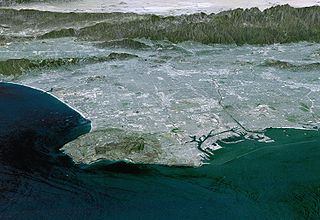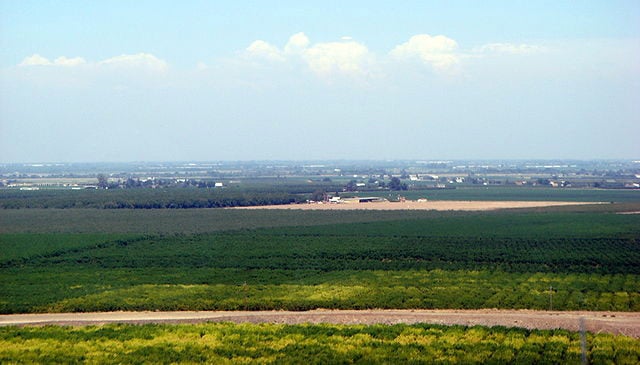Of the Bay Area, Central Valley and South Coast air sheds, air in the first region is by far the healthiest. It shouldn’t be too difficult to understand why that is.

That the region is often buffeted by winds blowing in off the eastern Pacific … Pacific Ocean, that is, sums things up. The constant mixing of the air there helps disperse whatever pollution would likely collect and concentrate. However, it seems the farther one is away from the city by the bay, the fewer the opportunities there are for such air filtering.
My guess is geography plays a big part. Sea breezes coming onshore are helped by the fact that there is a gaping gap for that and that gap is known more familiarly as the Golden Gate. In fact, it is no secret two of the windiest locations in all of California are Point Reyes at Point Reyes National Seashore located along the coastline north of San Francisco; the other being on the bay right around Candlestick Park situated in South San Francisco. It is as if the entire Bay Area has its own built-in (natural) central air-cleaning system.
Located some 400 miles to the south, Los Angeles in this regard isn’t quite as lucky. The region has an air pollution history all its own, the start of which, by the way, dates all the way back to 1943. In fact, the California Environmental Protection Agency Air Resources Board’s 1943 “Key Events in the History of Air Quality in California” entry, reads as follows:
“First recognized episodes of smog occur in Los Angeles in the summer of 1943. Visibility is only three blocks and people suffer from smarting eyes, respiratory discomfort, nausea, and vomiting. The phenomenon is termed a ‘gas attack’ and blamed on a nearby butadiene plant. The situation does not improve when the plant is shut down. See video clip.”

As for the video clip mentioned above, it is titled: “Clearing California Skies.” The 18-minute production actually sums up the south coast’s air quality situation quite well.
For those watching the film what one doesn’t see much of are winds. That right there pretty much tells the entire story. It was also pointed out that had nothing been done in the Los Angeles region on the air-quality-improvement front, the area would have the world’s worst air.
Back to the matter of winds, which typically blow northwest to southeast, those that make it through the Altamont Pass, between the Bay Area and the northern Valley, for example, no doubt carry in them dirt, dust and debris such being deposited throughout the state’s San Joaquin Valley.
According to the San Joaquin Valley Air Pollution Control District 27 percent of the pollution in the northern Valley, 11 percent in the central Valley and nine percent in the southern Valley, respectively, blows in from the Bay Area. To me, what this is saying is without the fugitive air coming our way from west of the coastal mountain range through the Altamont Pass and perhaps elsewhere, the air would be 27 percent less polluted in and around San Joaquin, Stanislaus and Merced counties; 11 percent less dirty in Madera, Fresno and Kings counties; and nine percent cleaner in Tulare and Kern counties. And what this is saying is that what pollution isn’t carried in via the jet stream is generated locally and regionally.
Putting a lid on pollution
Fortunately, California has enacted legislation to try to mitigate pollution in state.
By 2020 at least 33 percent of energy generation must be from renewable sources like sun, wind and geothermal.
The state’s Sustainable Communities and Climate Protection Act of 2008 (California Senate Bill 375) and the Global Warming Solutions Act of 2006 (California Assembly Bill 32) along with other related state legislative efforts should help lower greenhouse gas emissions.
The installation of 800 miles of high-speed rail between the Bay Area, Sacramento, the Valley, Los Angeles, Anaheim and San Diego by 2033 should also help, as should the Golden State’s cap-and-trade program, not to mention clean fuels and clean cars and trucks initiatives, greater dependence on public transportation and other effective programs as was also brought to bear in the aforementioned video.
As a matter of fact, in rounding out the film there is this: “Smart consumer choices, such as carpooling and alternative transportation, will matter more than ever. Public support for air quality programs will be crucial for success. Once again, California can take a pioneering lead, watched around the world, in the fight against air pollution. Clean air – it’s up to us.”
There is room for improvement still.
Images above: NASA
– Alan Kandel
